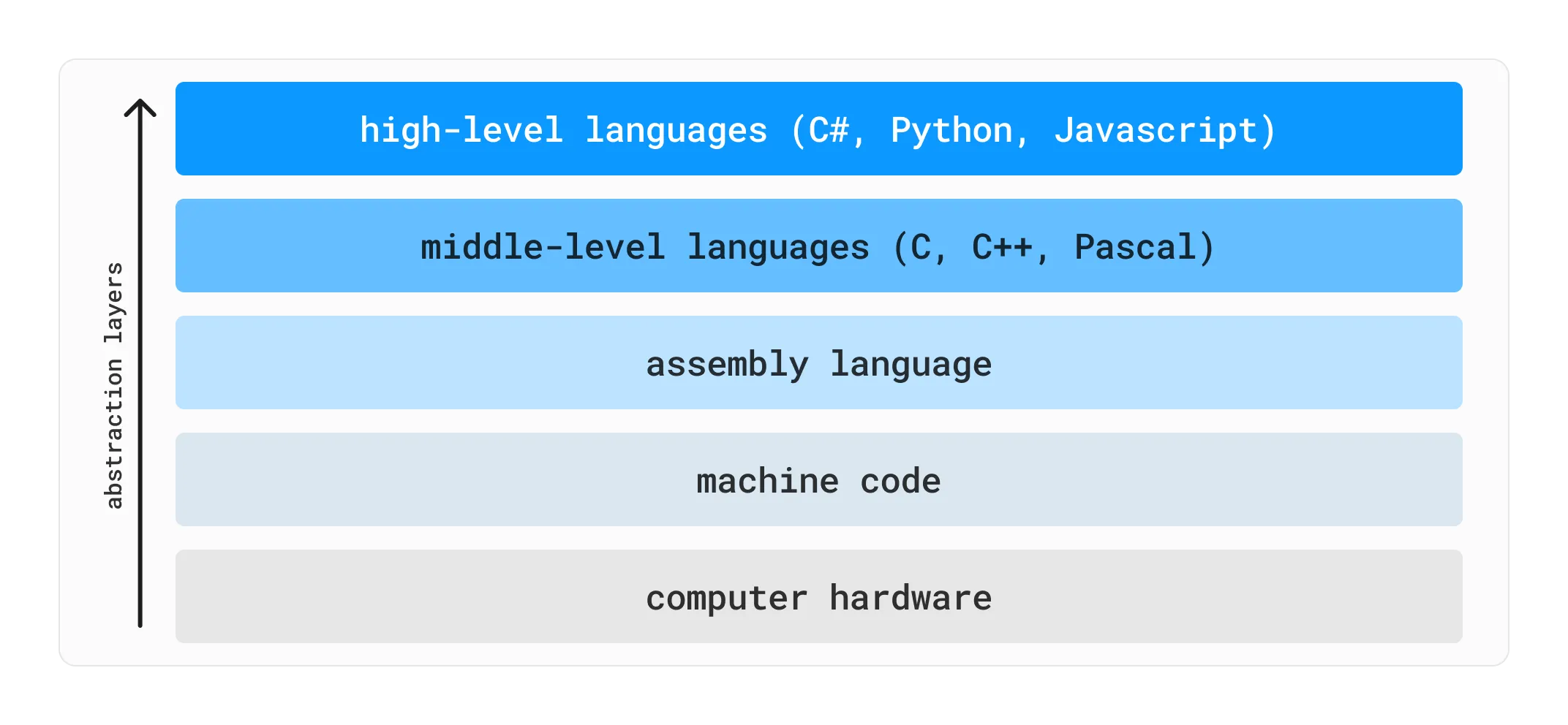Overview of low-level programming
There are many ways to think about and classify programming languages. One such way to think about programming languages is in levels of abstraction. The higher the level of abstraction, the further away from the hardware-layer you are. The lower the level of abstraction, the closer to the hardware you are.
High-level languages such as Python, JavaScript and C# do a lot of heavy-lifting for you. They abstract away the details of hardware-level implementations such as memory management, bits, bytes, pointers, etc so that you can be more productive, and focus on the problems you’re tring to solve. The trade-off is that you have less control or insight into what’s happening under the hood, and in some cases there may be a performance penalty as the languages are doing more for you. As such, programmers may choose to use a lower-level language such as C or C++ when performance is critical.

In this chapter, we will utilise the programming constructs you’ve been learning to explore low-level programming in C/C++. We will look at how to write programs that interact directly with memory, bits, and bytes, and you will gain insight into how more abstracted language features such as strings in C# actually work under the hood. In fact, that’s a great way to think about this chapter - we’re taking a look under the hood.